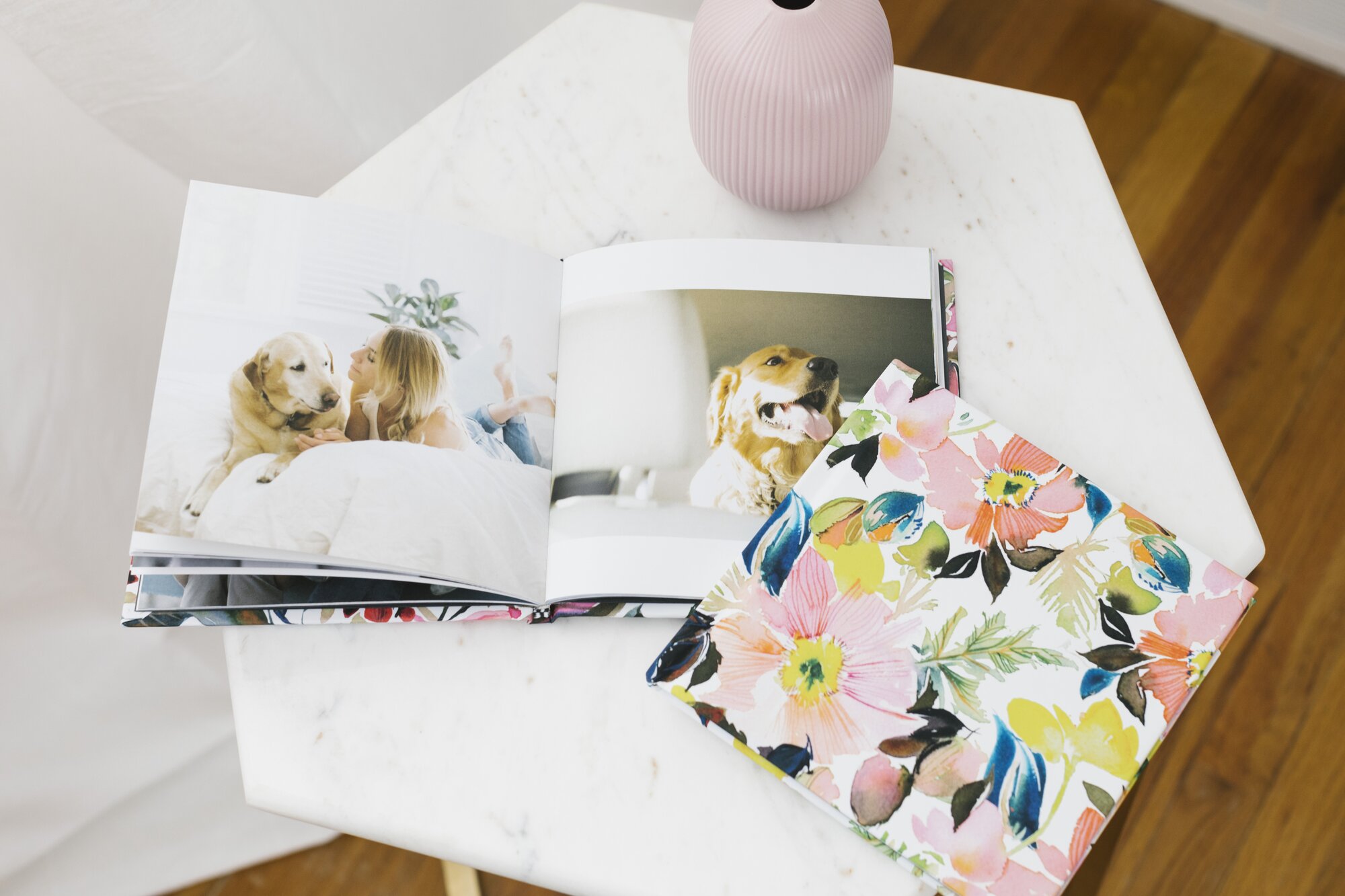FREE STANDARD SHIPPING, ALWAYS

How To Start A Self-Care Journal To Improve Your Wellbeing
Discover how starting a self-care journal can boost your wellbeing and bring balance to your daily life.
Posted 1/23/2025

Advice
First off, give yourself a well-deserved round of applause—you’re here, taking a step to prioritize you. And let’s be honest, between chasing toddlers, constantly tidying up, and trying to remember the last time you had a hot cup of coffee, carving out time for your wellbeing is no small feat.
Starting a self-care journal might feel overwhelming, but it doesn’t have to be. Think of it as a deep breath on paper—a simple way to reclaim a few moments of sanity. This guide covers everything from what a self-care journal is and why it’s beneficial, to how to create one that fits seamlessly into a beautifully chaotic life. It’s time to dive in!
What Is a Self-Care Journal and Why Should I Start One?
A self-care journal is a personal space to express thoughts, emotions, and experiences. It’s a tool to reflect on daily life, understand feelings, and prioritize mental and emotional health. Regular journaling provides insight into what brings joy, helps identify stressors, and offers a way to develop strategies for managing them effectively—all within the hustle and bustle of everyday life. It’s like having a quiet corner to recharge, even when life feels anything but calm.
Reasons to Start a Self-Care Journal
Stress Reduction
Writing about your feelings can boost your mental health and alleviate stress and anxiety, providing a therapeutic outlet for your emotions. Being a human in today’s world is a full-contact sport, and stress comes with the territory.
Journaling is like venting to a best friend who never interrupts. Writing down feelings—whether it’s frustration about a tantrum or gratitude for five minutes of silence—helps unload the mental clutter. It’s a therapeutic release that can make even the most overwhelming days feel more manageable.
Self-Discovery
Journaling prompts can lead to deeper self-awareness, helping you uncover patterns and behaviors that influence your well-being. Ever wonder why certain things light you up or completely drain you? Journaling can help connect the dots.
By reflecting on your day-to-day experiences, you’ll start to notice patterns—what triggers stress, what boosts joy, and what truly matters to you. Think of it as peeling back the layers of your busy life to rediscover yourself beyond the roles of parent, partner, or professional.

Goal Setting
Documenting your aspirations and tracking progress can motivate you to achieve personal growth and improve wellbeing. You’re already managing everyone else’s schedules, so why not focus on your own dreams too?
Use your journal to jot down goals—big or small—and track your progress. Whether it’s drinking more water, taking five minutes to breathe, or finally tackling that photo album, writing it down makes it feel real. Plus, seeing those checkmarks as you accomplish things? Chef’s kiss.
Emotional Balance
Regularly expressing your thoughts can lead to better emotional regulation and a more balanced outlook on life. Life can feel like a rollercoaster of emotions—one minute, you’re laughing at a funny toddler mispronunciation, and the next, you’re crying over spilled milk (literally). Journaling helps smooth out those emotional ups and downs. By putting your thoughts into words, you can process feelings instead of bottling them up, leading to more clarity, calm, and control in the everyday chaos.
A self-care journal isn’t just a notebook—it’s your secret weapon for navigating the beautiful, messy adventure of life with a little more peace of mind.
How to Start a Self-Care Journal: Step-by-Step
Choose Your Medium
Are you a pen-and-paper purist, or is typing on a phone or tablet more your speed? A physical notebook can feel grounding and tactile (perfect for those rare moments when you can sit quietly with a cup of tea). On the other hand, a digital app keeps things portable—ideal for jotting down thoughts while waiting in the carpool line or during your toddler's nap. Choose what feels easiest to stick with in your daily chaos.
Set a Routine
Let’s be real: life is busy. But carving out 10-15 minutes a day is doable—whether it’s during the quiet of early mornings, after the kids are in bed, or even during those precious moments when everyone’s happily distracted. Add it to your schedule, treat it like an appointment, and guard that time fiercely. This is your sacred few minutes to reflect and recharge.

Create a Comfortable Space
Find your journaling nook—a cozy chair, a quiet corner, or even your bed once the house settles down. It doesn’t have to be Pinterest-perfect, just somewhere you can breathe without someone asking for snacks. Bonus points if you light a candle or keep a blanket nearby for extra comfort vibes.
Start Writing
No need to overthink it—just start. Write about your day, how you're feeling, or whatever’s swirling in your mind (even if it’s a to-do list). Feel stuck? Try prompts like, “What made me smile today?” or “What’s one thing I’m grateful for?” There’s no “wrong” way to journal—messy, imperfect, and honest is what makes it meaningful.
The goal is progress, not perfection, and your self-care journal will soon become a little haven in the midst of the daily whirlwind.
Self-Journaling Ideas to Get Started
Gratitude Lists
Write down things you're thankful for to foster positivity. Think of this as your highlight reel. Write down the little things—like finally getting everyone out the door on time, a spontaneous hug from your kid, or even that rare uninterrupted coffee. Gratitude journaling isn’t about perfection; it’s about celebrating the tiny wins that make your day brighter.
Mood Tracking
Note your emotions daily to identify patterns and triggers. Ever feel like your emotions are playing musical chairs? Jotting down how you’re feeling each day can help spot patterns (like why Mondays are extra stressful or why that second cup of coffee always sparks joy). Over time, you’ll get better at understanding your triggers and tailoring your self-care accordingly.
Goal Mapping
Outline your short-term and long-term goals, and brainstorm steps to achieve them. Whether it’s surviving bedtime without losing your patience or carving out 30 minutes to yourself, write it down! Break goals into small, realistic steps—it’s like building a roadmap to a happier, calmer you. Plus, nothing beats the satisfaction of crossing off even the tiniest accomplishment.

What to Write in Your Self-Care Journal
Starting can feel overwhelming, so here are a few easy prompts to get the pen moving so you can crush your self-care goals:
- What are my favorite forms of self-care? (Bubble baths? A solo Target run? No wrong answers!)
- What makes me feel calm? (Think of moments that quiet the mental noise—like watching the sunrise or listening to your kids giggle.)
- Write a letter of encouragement to myself from the perspective of someone who loves me. (What would your best friend say when cheering you on?)
If you're still unsure where to begin, try out one of the templates below to spark your writing.
Template and Prompts
Here’s a super-simple structure for days when you don’t know where to start:
- Date: [Your Entry Date]
Today's Mood: [Happy, Anxious, Content, Overwhelmed—go with your gut!]
- Gratitude List:
[Big or small, list 3 things that brought you joy.]
- Daily Reflection:
[What went well today? What was tough? What’s on your heart?]
- Self-Care Activity:
[Describe one thing you did—or will do—to take care of you.]
Tips for Creative Journaling
Art Journaling
If words aren’t flowing, try doodling, painting, or collaging. Whether it’s stick figures or masterpieces, let the visuals tell your story—bonus points if your kids join in for some creative bonding!
Photo Journaling
Print photos that capture joy, peace, or growth and pair them with captions or short reflections. It’s like creating a mini scrapbook of your self-care journey. Pro tip: Chatbooks makes photo journaling an absolute breeze!
Bullet Journaling
Feeling time-crunched? Use bullets, symbols, or quick notes to organize your thoughts. It’s efficient, flexible, and totally parent-approved.
Remember, your journal is a personal space—feel free to experiment with different styles and find what resonates with you.
You’re Doing an Amazing Job!
Taking time to journal is more than just writing—it’s a gift you’re giving yourself. By reflecting, creating, and capturing your journey, you’re honoring the amazing job you’re doing every single day. And if you’re ready to bring those reflections to life, photo journaling with Chatbooks is the perfect way to hold onto those moments of growth, joy, and self-discovery. Happy journaling—you’ve got this!
Readers are loving

60+ Sweet New Baby Quotes

How Much to Tip a Wedding Photographer

51 Best Goodbye Quotes